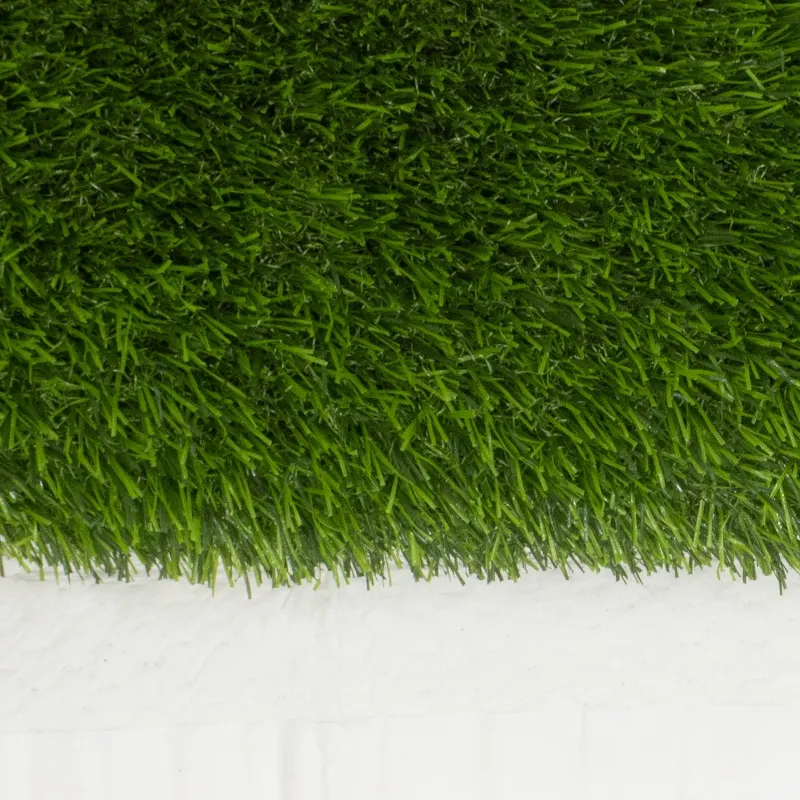
- Afrikaans
- Arabic
- Belarusian
- Bengali
- Czech
- Danish
- Dutch
- English
- Esperanto
- Estonian
- Finnish
- French
- German
- Greek
- Hindi
- Hungarian
- Icelandic
- Indonesian
- irish
- Italian
- Japanese
- kazakh
- Rwandese
- Korean
- Kyrgyz
- Lao
- Latin
- Latvian
- Malay
- Mongolian
- Myanmar
- Norwegian
- Persian
- Polish
- Portuguese
- Romanian
- Russian
- Serbian
- Spanish
- Swedish
- Tagalog
- Tajik
- Thai
- Turkish
- Turkmen
- Ukrainian
- Urdu
- Uighur
- Uzbek
- Vietnamese
Exploring the Benefits of Synthetic Turf for Your Outdoor Spaces
Dec . 23, 2024 13:06 Back to list
The Rise of Faux Lawn Grass A Modern Solution for Eco-Friendly Gardening
In recent years, the trend of faux lawn grass has gained significant traction as homeowners and businesses alike search for sustainable, low-maintenance alternatives to traditional grass lawns. Faux lawn grass, often referred to as artificial turf, is a synthetic product designed to mimic the look and feel of natural grass. This innovation is not only transforming outdoor spaces but also paving the way for a more environmentally-conscious approach to landscaping.
One of the most compelling reasons for the increasing popularity of faux lawn grass is its ability to conserve water. Traditional lawns require a substantial amount of water to remain green and vibrant, especially in arid regions where drought conditions are common. According to studies, a typical American lawn can consume up to 40,000 gallons of water annually. In contrast, faux grass needs no watering, greatly reducing water usage and helping combat the global water crisis. Homeowners can contribute to sustainability efforts while still maintaining an appealing outdoor area.
Moreover, faux lawn grass eliminates the need for fertilizers, pesticides, and herbicides. These chemicals, often harmful to the environment, can leach into the water supply and disrupt local ecosystems. The absence of these products not only promotes a healthier environment but also ensures a safe space for children and pets to play. This makes artificial grass an excellent choice for families seeking a beautiful yet safe outdoor area.
Maintenance is another benefit that sets faux lawn grass apart. Traditional lawns require regular mowing, weeding, aerating, and fertilizing, all of which can be labor-intensive and expensive. Conversely, artificial turf only requires occasional brushing and rinsing to keep it looking its best. This ease of maintenance appeals to busy homeowners and commercial property managers who wish to save time and money while still enjoying a lush, green landscape.
faux lawn grass

In addition to practical advantages, faux lawn grass also offers aesthetic appeal. Advances in technology have led to the development of high-quality synthetic grass that looks remarkably real. Manufacturers now produce a variety of options that mimic different grass types, textures, and colors, making it easy for consumers to find an artificial turf that suits their specific tastes and needs. This versatility allows homeowners to customize their spaces, whether for a backyard, front yard, or commercial landscape, while ensuring that their lawns remain green year-round.
Another significant factor driving the popularity of faux lawn grass is its long lifespan. When properly installed and maintained, high-quality synthetic grass can last for 15 to 25 years, making it a worthwhile investment for many property owners. Unlike natural grass, which can suffer from seasonal wear and tear, artificial turf remains constant in its appearance and usability, regardless of weather conditions. This durability means that homeowners won’t have to worry about reseeding or patching dead spots every year, ultimately saving them money in the long run.
While some may still have reservations about faux lawn grass, citing concerns over its environmental impact during production or its heat absorption in direct sunlight, many reputable manufacturers are addressing these issues. Eco-friendly options made from recycled materials are becoming more prevalent, and innovative cooling technologies are improving the safety and comfort of synthetic surfaces on hot days.
As public awareness of environmental issues continues to grow, the demand for sustainable solutions in landscaping will likely increase. Faux lawn grass represents a significant leap forward in this regard, offering a multifaceted solution for those looking to reduce their environmental footprint without sacrificing beauty or functionality.
In conclusion, the rise of faux lawn grass is a promising trend that caters to the needs of modern homeowners and businesses. Its numerous benefits, including water conservation, reduced chemical usage, low maintenance, aesthetic flexibility, and durability, make it an appealing choice for anyone looking to enhance their outdoor spaces responsibly. With continual advancements in technology and materials, artificial turf is poised to play a crucial role in the future of landscaping, promoting greener and healthier environments for generations to come.
-
The Benefits of Artificial Turf for Indoors
NewsJul.15,2025
-
How Artificial Grass Suppliers Ensure Quality Products
NewsJul.15,2025
-
Artificial Grass and Pets: A Space for Relaxation
NewsJul.08,2025
-
Balcony & Outdoor Decoration with Artificial Grass
NewsJul.08,2025
-
Best Indoor Artificial Grass for Home
NewsJul.07,2025
-
Best Pet Turf for Dogs: Safe & Durable Artificial Grass Options
NewsJul.07,2025
Products categories









